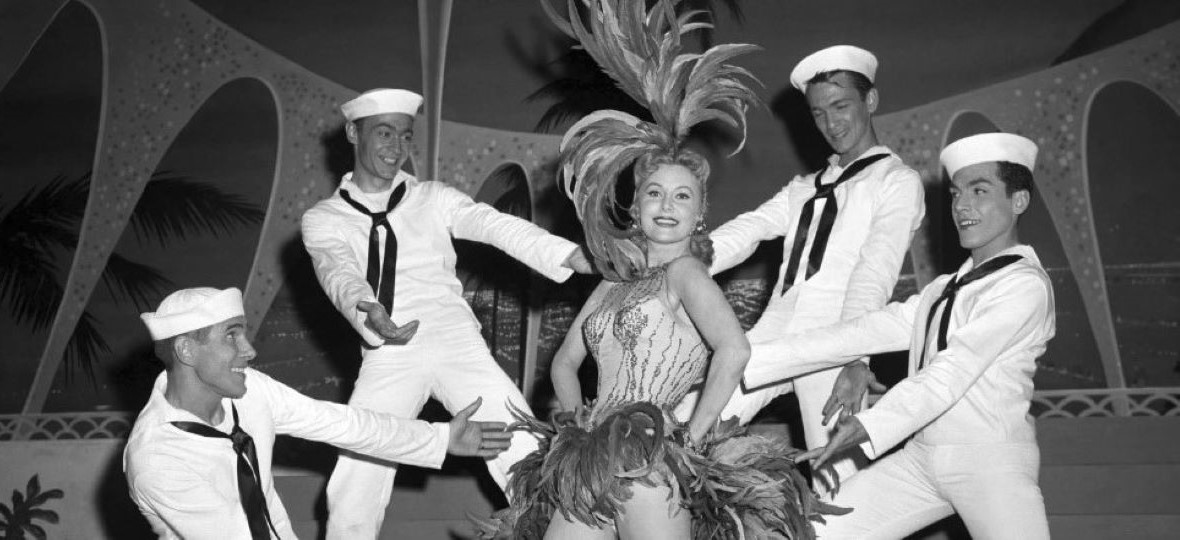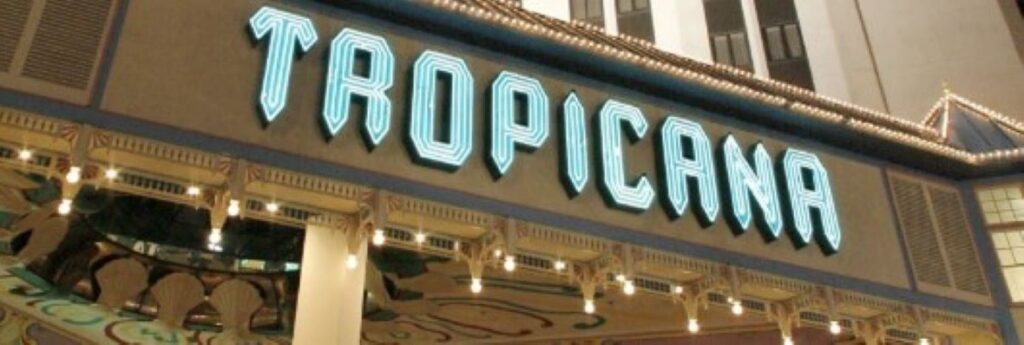When the Tropicana Las Vegas opened in 1957, Nevada’s lieutenant governor unlocked the door to what would become a Sin City landmark for more than a half-century. Then he threw away the key. “This was to signify that the Tropicana would always stay open,” said historian Michael Green.
Six decades later, the storied hotel-casino that once had ties to the mob and was nicknamed the “Tiffany of the Strip,” is set to shut its doors for good to make room for a $1.5-billion Major League Baseball stadium that will be home to the relocating Oakland Athletics.
Tropicana owner Bally’s Corp. says the closure on April 2 – days before the 67th anniversary of the resort’s opening – marks the beginning of preparations for demolition.
The ballpark is a “once-in-a-lifetime opportunity,” Bally’s president, George Papanier, said in a statement.
“Bally’s looks forward to the development of a new resort and ballpark that … will become a new landmark, paying homage to the iconic history and global appeal of Las Vegas and its nearly 50 million visitors a year,” the company said in a news release.
The population of Clark County, which includes Las Vegas, had just surpassed 100,000 when the Tropicana opened on a Las Vegas Strip not yet lined with the megaresorts it’s known for today, Green said. The Flamingo had been open for a decade. The high-rise Stardust debuted the following year, costing $8.5 million.
Known then for its opulence, Green said, the Tropicana had mosaic tiles and mahogany panels throughout. There was a towering tulip-shaped fountain near the entrance. Each hotel room had a balcony.
Behind the scenes of the casino’s opening, the Tropicana had ties to the mob, largely through reputed mobster Frank Costello, according to Green, who also serves on the board of directors of The Mob Museum in downtown Las Vegas.
Weeks after the grand opening, Costello was shot in the head in New York. He survived, but police had found in his coat pocket a piece of paper with the Tropicana’s exact earnings figure. According to a post on The Mob Museum’s website looking back on the Tropicana’s history, the note also mentioned “money to be skimmed” for Costello’s associates.
 In the 1970s, federal authorities investigating mobsters in Kansas City charged more than a dozen mob operatives with conspiring to skim nearly $2 million in gambling revenue from Las Vegas casinos, including the Tropicana. Charges connected to the Tropicana alone resulted in five convictions.
In the 1970s, federal authorities investigating mobsters in Kansas City charged more than a dozen mob operatives with conspiring to skim nearly $2 million in gambling revenue from Las Vegas casinos, including the Tropicana. Charges connected to the Tropicana alone resulted in five convictions.
But the famed hotel-casino also enjoyed many years of mob-free success, Green said, and expanded in later years to include two hotel towers. In 1959, it debuted its long-running topless show “Folies Bergere,” which was featured in the 1964 Elvis Presley film “Viva Las Vegas.” Magicians Siegfried Fischbacher and Roy Horn got their start in the show.
A-list stars including Sammy Davis Jr., Louis Armstrong and Gladys Knight have performed at the Tropicana, and in 1998, daredevil showman Robbie Knievel made a record-breaking motorcycle jump outside the hotel, soaring to 70 metre over a row of limousines.
Today, the site at the south end of the Las Vegas Strip intersects with a major thoroughfare named for the Tropicana. It is surrounded by towering megaresorts: the MGM Grand, Excalibur, New York-New York, Luxor, and Mandalay Bay. Nearby are the homes of the NFL’s Las Vegas Raiders, who left Oakland in 2020, and the city’s first major league professional team, the NHL’s Vegas Golden Knights.
Bally’s says it will no longer accept hotel bookings after April 2 and will relocate any customers who have existing reservations past the closing date.
The ballpark planned for the land beneath the Tropicana is backed by $380 million in public funding. All 30 MLB owners in November gave their approval for the A’s to move to Las Vegas. The stadium is expected to open in 2028.

